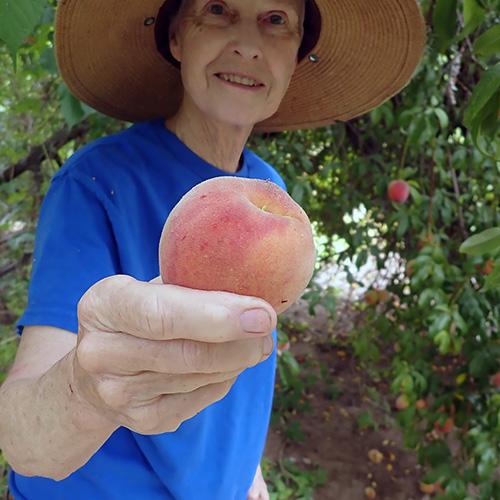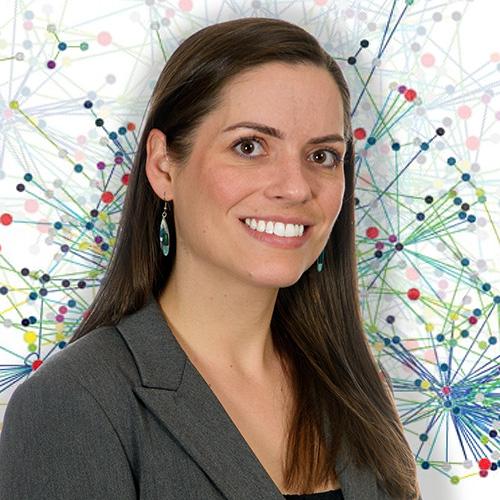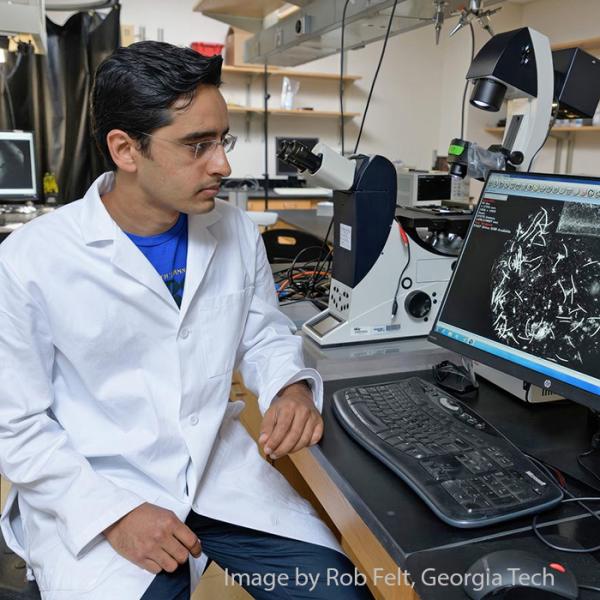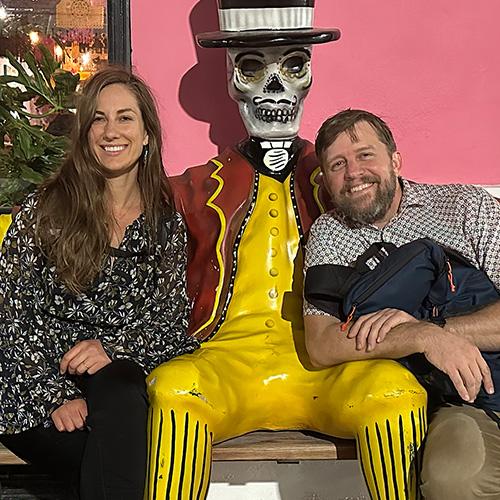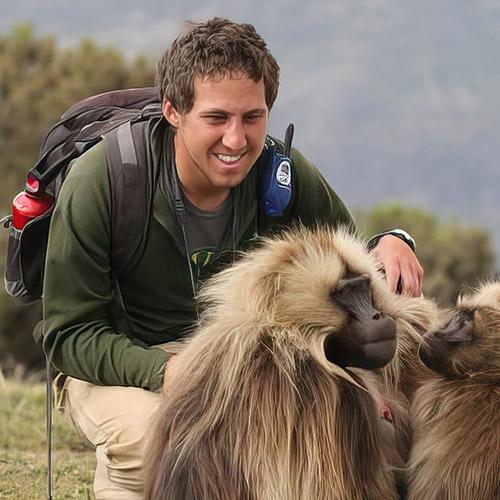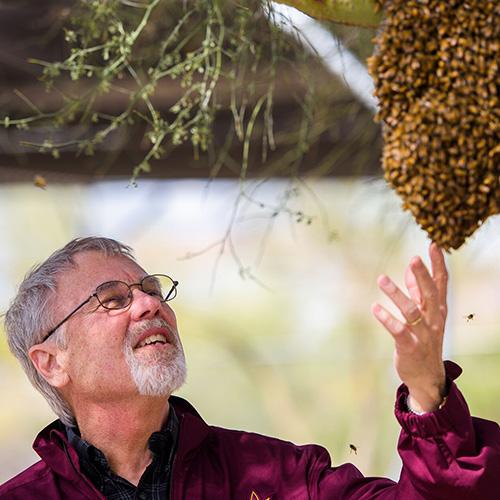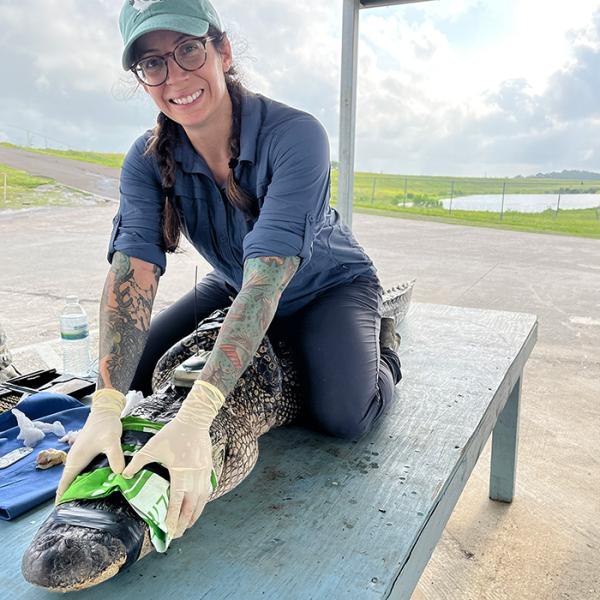On this podcast, we like to explore how science meets the public. In this episode, we examine the art of communication, with biologist, author, and filmmaker Randy Olson. Dr. Biology learns how Olson uses humor and creativity as powerful tools. Inspired by platforms like The Daily Show, Randy's film "Sizzle" tackles global warming with a comedic flair. Listen as he shares invaluable advice for aspiring biologists and filmmakers, emphasizing the importance of passion and motivation. Whether you’re curious about effective science communication or seeking inspiration for your career, Randy’s insights offer a compelling glimpse into the future of storytelling in science.
This episode was pulled from our special collections stored in our secret vault.
Learn more:
Watch:
Flock of Dodos: The Evolution-Intelligent Design Circus
Sizzle: A Global Warming Comedy
Read:
Don't Be Such a Scientist
Narrative Gym
If you have not already, please subscribe to the podcast so you can be notified about new episodes.
Biology, Books, and Movie Magic
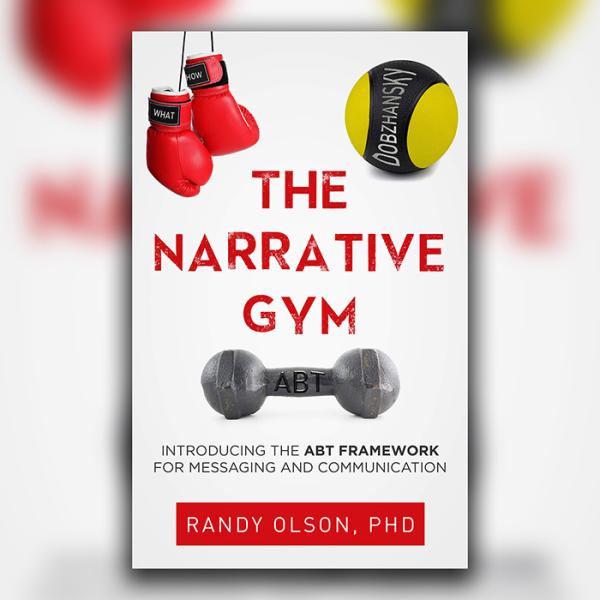
Dr. Biology: 0:08
[Electronic keypad sound – vault door opens]
This episode of Ask A Biologist is being pulled from our special collections that have been stored in our secret vault.
This is Ask a Biologist, a program about the living world, and I'm Dr Biology. Today, we're going to be talking about a lot of things. It'll be biology, filmmaking, climate change, and the E-word, yes evolution. In case you missed it, this year 2009, is the 200th birthday of Charles Darwin. Actually, his birth date is February 12th, and it's also the 150th anniversary of the first publishing of his famous book on the origins of species. Now, both climate change and evolution have stirred up a lot of discussion and a lot of news stories.
My guest scientist is Randy Olson, marine biologist turned filmmaker. He's been making documentary films since the 1990s and two of them have been on the topics of evolution and climate change. Since he's both a scientist and a communicator, it seemed like a great way to learn a little bit about both subjects. Welcome to the show, Randy Olson.
Randy: 1:25
Great to be here Dr. Biology.
Dr. Biology: 1:25
While preparing for this conversation, I did my homework and I realized, you know, we probably have enough material to create our own little mini-series, but unfortunately we don't have that much time. So how about we start with evolution? But right now I want to start with your evolution from biologist to filmmaker. Why did you change careers?
Randy: 1:50
Oh, in my mind I never changed anything. The two careers actually have the same basic form, which is both of them involve storytelling. And I've come to realize in recent years people ask me that question all the time how in the world could you go from being scientist to filmmaker? And I've come to realize that the years people ask me that question all the time how in the world could you go from being a scientist to a filmmaker? And I've come to realize that the unifying theme is the telling of stories. And this is one of the things that scientists don't really understand these days is that they are storytellers. They do the same thing that a filmmaker does. A scientist goes out into nature and collects data, comes back into a laboratory, puts it all together into a story that they can tell to the world about something that they think they see going on. A filmmaker does the same thing goes out into the world and shoots film, comes back into an editing suite, puts the film together into a story that they then share with an audience in the same manner.
Dr. Biology: 2:38
Well, you know, I ask that because I was going to say has your career really changed? And the reason for it is on this show. I often say at heart we're all scientists, because I think we're all inquisitive.
Randy: 2:48
Right, that's very true, I think we're all searching for patterns to try and understand the world with, and so when we see somebody do something once, we notice that when they do it a second time, we start to think oh, maybe that's a pattern. Somebody does the same mistake three times. You draw the conclusion oh, we've got a basic rule here this person does this. That's the same thing that a scientist does goes out and tries to look for patterns.
Dr. Biology: 3:12
Now your early career, before you added filmmaking, is in marine biology. Did this come about like every other young wannabe scientist? The allure of the ocean.
Randy: 3:27
Absolutely. I grew up in Hawaii from ages five to ten, spent unbelievable amounts of time at the beach, in the water, snorkeling, and more or less imprinted on the ocean. I think I got the ocean so deep into my blood back in those early years that when my family moved to Kansas, stuck me in the middle of the country. I never went away. I spent all those years in junior high school and high school and even college in Kansas, constantly trying to get back to the ocean, taking countless trips to the Caribbean and to California, and it was just inevitable. That's all I knew. When I was in high school I used to say to people I'm not sure what I'm going to do, I just know it's going to have something to do with the ocean. I thought for a long time I was going to be an underwater archaeologist because I began diving a lot when I was in high school and was really interested in shipwrecks and that seemed like something I could do. That was in the ocean. And I don't really quite know how I got into science, but it was kind of my sophomore year of college that I and actually I know exactly what happened.
Randy: 4:27
My sophomore year of college I dropped out of college and wandered around with a few friends for a while and ended up getting a job in Puerto Rico working on an oceanographic project for that semester and met some wonderful scientists marine biologists and nowadays, when I look back and think about it, what was it that was so wonderful about those scientists? It was that they told amazing stories. And we worked on this ship off the north coast of Puerto Rico and every evening at the end of the day, after we collected samples, everybody would gather on the back deck and sit there at sunset and have a little cocktail and watch the sun go down. And these older marine biologists would sit and tell stories of all their travels around the world, of all the work they'd done South Seas and Australia and the Pacific and all over the place.
Randy: 5:09
And I just sat there, mesmerized, and I think that I first fixated on the idea of I want to do this career. That involves all this traveling, and what is this career? Oh yeah, this career is science. So, okay, that's what I'm going to do, I'm going to go become a scientist. And then I think the deeper I got into the science stuff, the more it appealed to me in terms of the logic of science and the idea of using logic to try and make sense out of the world. I still really enjoy that.
Dr. Biology: 5:34
So that was the easy part of evolution. Now the hard part. Let's talk about the evolution of living things and the topic of your movie Flock of Dodos. The full title is actually Flock of Dodos, the Evolution Intelligent Design Circus. Before we jump into that, can you first give a brief summary of what evolution is all about, because I don't think a lot of people understand what it really is.
Randy: 6:03
Here is what evolution is.
Randy: 6:05
It is the science of change.
Randy: 6:07
One of the unfortunate things that has happened is that scientists are not very good with communication.
Randy: 6:13
They're not very good at understanding how to present themselves to the public, and what has happened over the last hundred years. In particular, the field of evolution has been burdened by all sorts of political baggage that people have thrown onto this topic of evolution, and nowadays there's a great deal of misunderstanding and people associate evolution with all these horrible things, and there are movies made that try and cast all kinds of aspersions at the field of evolution, and I really wish the world of science could step back and start everything back to square one and reinvent the topic of evolution and give it the subtitle the science of change because that's what it's about at heart. It is the field of science in which people take a look at the way in which things change and come up with some of the basic principles to explain how that change happens, what the consequences of it are, and so, at its core, there's nothing political about the topic of evolution. It's simply the principles of how it is that populations change, that species change, that everything changes over time.
Dr. Biology: 7:15
Is there a single moment or thing that most convinced you that evolution is real?
Randy: 7:23
In all of my studies and education and everything, the single thing that most hit me to make me realize that evolution really has happened and takes place is looking at the skulls of animals. There's nothing more amazing than to look at animal skulls, and I would encourage any kids out there to just go to the computer and type in animal skull on Google and maybe even click the Google Images button and start looking at all the different types and shapes of animal skulls and realize that they all started from a single common form. They've all got two eyes, they've all got a single mouth, they've all got a brain case and what you see is that evolution has taken that one form and bent it and twisted and shaped it around. Look at the skull of an anteater, which is stretched long and thin. Look at the skull of a polar bear and look at the skull of a grizzly bear. Look at the skulls of dogs and all the ways in which it's just bent around and shaped around and you begin to realize that it's almost like it's a piece of plastic or silly putty or something like that, and that over time evolution has selected different forms, but they all begin with those same basic elements.
Randy: 8:29
When I was in graduate school we did exercises in classes where we sat there and looked at all those skulls in comparative anatomy. And you look at the teeth as well. They've all got the same original bunch of teeth and you see that the reptiles have got tons of teeth and then some of the mammals that have become very specialized have them all reduced down into just a few very specific forms. It's so fascinating looking at skulls and that to me is the single most compelling piece of evidence that you can see all these bridges between different forms and the way they reshape skulls.
Dr. Biology: 9:01
When watching your movie. There's this particular poker game where you have a bunch of biologists discussing the merits of evolution and creationism and intelligent design and one of them says evolution is a fact. Is evolution a fact?
Randy: 9:17
As much as anything in science is a fact, is evolution a fact, as much as anything in science is a fact. Evolution is an idea that Charles Darwin kind of formulated in the mid-1800s, and it's been 150 years since then, with all of the greatest minds in the world, in the science world, trying to show that Darwin was wrong. And after 150 years of all the best minds doing their best to show that he was wrong, nobody's been able to show that. And at that point, there is so much information gathered that supports everything that Darwin suggested that you get to the point where you simply have to conclude that it is a fact.
Dr. Biology: 9:50
So a lot of people have a problem with teaching either evolution or creationism in schools. You know you can be on one side or the other. So there is this. You know conflict. But my question is is there really a conflict between evolution and religion?
Randy: 10:04
I don't think so. There are a great many major evolutionists who are deeply religious, and the fellow that I feel is the greatest popularizer of evolution in the past 100 years, Stephen J Gould, wrote an entire book near the end of his life called Rocks of Ages, in which he said that these two realms of science and religion are not in conflict. They don't overlap each other, and so they're completely different topics, and you're welcome to keep them completely separate. And that's what happens. Evolution tends to be more in our heads. We think about it a lot. It's based on a lot of information. Religion tends to be more in our heads. We think about it a lot. It's based on a lot of information. Religion tends to be more in our hearts. They're completely different organs that we're bringing into play when we're talking about the two different subjects.
Randy: 10:45
I was raised in Kansas. I was taught from an early age to respect people's religious beliefs. There's no need to get into it. These are just simply parts of human nature that we quite often differ on, and my feeling these days is the best thing you can do about religion is try and keep it at a fairly intuitive level. It's something that you sense and you believe, and when you start to get very analytical about it and come up with a whole bunch of rules as to how religion works, things like that. That's when it comes into conflict with other people's sets of rules. So that's my feeling is let's keep evolution up in the head with lots of information and logic. Let's keep religion down in the lower organs, where it's more intuitive and less defined.
Dr. Biology: 11:24
We started the Darwin Distinguished Lecture Series and our first lecturer was Ed Wilson. He actually was on the show earlier. In that lecture, one of the things he mentioned was that scientists would love to be able to prove there is a God. I think he even said there would have to have multiple Nobel Prizes just for that. So the big thing for me is to try to, as you pointed out, separate these two. I think they can exist. One is science, the other one is a belief, which is a really important thing to humankind. So I'm pleased to hear you say that and it was actually very interesting because your movie Flock of Dodos. I bet, when people go to watch it, if they're on one side of the spectrum versus the other, if there's an evolutionist over here and there's a creationist over here or an intelligent design person, I have a sneaking suspicion that they have different views of who are the dodos. Absolutely yes, who are the dodos?
Randy: 12:34
You have to watch the movie and come to your own conclusion. I think there's a little bit of dodo-ness to go around for everybody. Both sides make plenty of mistakes. The movie is not that much about science. It's mostly about communication, the way in which people are communicating about this issue and presenting themselves, and unfortunately, scientists sometimes don't come off very well. Scientists sometimes don't come off very well and that's very important in this day and age because people increasingly are assessing whether or not they're going to trust somebody and believe them based on what they think of them as a person, in their basic kind of presentation.
Randy: 13:08
And that's sort of what I did with the movie was I held a mirror up in front of a group of scientists and showed them what they look like when they get together and start talking about these issues, and they come off as very arrogant, condescending and full of themselves and know-it-alls. We had a screening in Kansas the very first screening ever of this movie. There was a group of 15 high school kids that came to it and when it was over, a journalist asked them what they thought of the movie and the single biggest impression they walked away with was wow, those scientists sure were obnoxious. That wasn't really the goal of the movie entirely. You know, I would hope they'd also realize that the people presenting the intelligent design side weren't very credible and I think they had that secondarily. But it was that one image of these scientists and the way in which they really are a bunch of know-it-alls, and that's the downside of academics Sometimes that happens.
Dr. Biology: 13:55
Okay. So my guess is you're going to say scientists need to work on that skill.
Randy: 14:00
That is the truth. It's unfortunate, but true increasingly in the world today. There was once a time, 30 or 40 years ago, where a scientist could get up and talk to a group of people and they would respect the fact that the scientist had a PhD and simply accept them relatively uncritically. We're in a different world today. People now have access to the Internet, they do a lot of reading, they come up with their own opinions, and the communication has shifted a little bit. It's quite often less about what the person's saying and more about how they're saying it, and so that's what's important. It's important to everybody. You need to think about that. It's not just what you're saying, it's how you say it, and I think everybody knows what that means.
Dr. Biology: 14:36
Well, in this case, it's the storytelling. Again, Like you said, we need to be better storytellers. I like to bring this up because, in the world of science, we often think of math, we think of chemistry, we think of all of the hard sciences, but we often forget the fact that language arts are so important and communication is so critical. You can be the best scientist in the world, but if you can't communicate what you've learned to the public not just to your peers, but to the public you really haven't done your job.
Randy: 15:06
So true, and the world of science hasn't had to worry about that very much. They haven't had to worry about integrating with humanities, with those sorts of things, with the arts. But again, nowadays we have so much information floating around out there that it's become very competitive. And today the big battle is in terms of trying to get people's attention, and you see this all over the place. More than ever today, people are fighting for attention.
Randy: 15:32
I saw somebody being interviewed on a TV show a couple of weeks ago and they were in front of a crowd of people Actually, it was last fall around the election time and behind the person being interviewed were all these people holding up signs with their own personal websites yada, yada, yada.com. And you just realize, every one of those people holding up signs, they're fighting for their own attention. Look at me, look at me, come to my website, pay attention to me. That didn't go on 30 or 40 years ago. It used to be. Everybody stood in the crowd and was very humble and happy. Now everybody wants to have their voice out there. It's turned into a big cacophony and it becomes disorienting for the public, who you're supposed to listen to.
Randy: 16:11
One is to make government more repressive and simply pass laws that prevent people from trying to grab attention like that and having alternative views. That doesn't happen in this country. We're a free society, so the only solution is to engage in this competitive process and communicate more effectively and more powerfully than everybody else. That takes a lot of attention to, a lot of dedicating resources, and prioritizing it. That's what the science world hasn't done in the past, but they're starting to. Now, and this is a new topic that is gaining a lot of momentum, is the communication of science. There's a shift that's going on.
Dr. Biology: 16:49
As if evolution is not a hot enough topic. I'd like to talk a little about your other movie, Sizzle: a global warming comedy. Now, climate change is another subject today that some people think isn't really not real. They think it's being made up. Others, like Al Gore, are very concerned about climate change. So let's talk about your movie and why you would, in the first place, call it a comedy, because that was curious to me.
Randy: 17:24
So why would I make a comedy about such a serious topic as global warming? And many people have asked that and some of the people have been upset and my answer is we can't afford to not be making comedies about global warming. We can't afford to not be using any means of grabbing the attention of the audience. And again, this is. The problem today is that everybody's so distracted it's hard to get their attention. But we know that humor and entertainment is still a very powerful force in our society.
Randy: 17:46
If you look at things like the Daily Show and The Colbert Report, they've become enormously popular in the last 10 years. When Jon Stewart started on the Daily Show 10 years ago, it was still a silly little, frivolous piece of nonsense on Comedy Central. All of a sudden, about six or seven years ago, they began getting serious journalists coming on there and realizing that actually this piece of humor had a lot of substance to it and it's a means of reaching particularly a younger demographic. And nowadays this is a byproduct of all this. Noise is the one thing that people always have time for. It's just like Jell-O there's always room for Jell-O, there's always room for entertainment. So it's an opportunity to reach people and that's why I've tried to utilize a little bit of entertainment in the form of comedy to open up the door for an audience and let them have some fun and then eventually get around to a very meaningful message that we have with this movie.
Dr. Biology: 18:34
So do you believe humans are causing global warming?
Randy: 18:38
Yes, absolutely. Not only do I believe that most of the skeptics in the movie even concede that when the skeptics fall apart is they disagree on exactly how it's happening, on what to do about it and all those sorts of things, whether we can do anything about it, but several of the major skeptics also concede that Even Michael Crichton, before he died last year, also conceded that humans were causing global warming.
Dr. Biology: 19:02
Well, it turns out. I don't like to do a shameless plug, but we actually have an institute here. It's called the Global Institute for Sustainability, and they're looking into these very things. They're looking into climate change, and not only that, but also our resources. You know, the planet is a self-contained sphere. It doesn't get things from outer space other than rays and energy from the sun. So if we don't take care of what we have here and conserve, we're going to have a real problem. So if someone really wants to dig into it, they can With sizzle. I love the idea that you use comedy. I just had to bring it up that way, because it's when I look at the title. I come from a science background and so you expect a documentary, and in this case, I think, is it called a mockumentary? Is that what?
Randy: 19:49
it's called Sizzle's made up of three genres. It's mockumentary, documentary and reality.
Dr. Biology: 19:54
Oh, okay, all right Wow.
Randy: 19:56
The reality element is the cameraman that we had. So we did these interviews with real scientists and one of our cameramen was a stand-up comedy actor and we had him pretend that he was a cameraman until halfway through the interview and then he would suddenly out of nowhere, interrupt the interview and start arguing with the person I was interviewing and that brought out all sorts of unplanned moments that you see in the movie and it's a bit like the movie Borat. That's sort of our inspiration. That got us started and that was the starting point for the movie was wouldn't it be interesting to interview a major expert and to have somebody in the crew actually disagree with the expert and to just out of nowhere interrupt and start arguing with them and stealing the interview from me and then see what happens, which is what we did about a dozen times.
Dr. Biology: 20:39
If you were able to have a person make one change in their life to reduce the impact of climate change, would you be able to pick one?
Randy: 21:03
I would say the number one change is to support all major politicians who are pushing for legislation at the large scale to do these things, to get involved with political actions of that sort, because this is what most of the experts know is these problems are so large at such a broad scale, they're only going to be really solved by large-scale government political action. It's important to do the best you can in living your lifestyle and changing light bulbs and driving efficient cars, but in the end the real solutions are going to come from big governments and trying to figure out ways to get some of these countries that are putting out the most carbon emissions, including the US, to change at a national level. So the problems are so urgent and pressing that it has to happen through politics.
Dr. Biology: 21:41
On this show. I asked three questions from all my guests. This is stealing from James Lipton in the actor's studio, Uh-oh. The first one you actually answered it's when did you first know you wanted to be a scientist or a biologist? So you did a great job of that. Now what if I took it away from you? You can't be a scientist and you can't be a filmmaker. I'm going, if I took it away from you, you can't be a scientist and you can't be a filmmaker. I'm going to take all that away from you. And a lot of times my scientists like to slide into the world of education and I really, really love hearing that they would become teachers. But I want to really stretch you a little bit. If I take that all away from you, what would you be?
Randy: 22:18
Pro surfer.
Dr. Biology: 22:21
You are my second pro surfer. You know that I have a physicist from Exeter, England, that would be a pro surfer or a pro snowboarder, so why a pro surfer?
Randy: 22:33
Surfing is the most wonderful sport in the entire universe. Yeah, I surf very avidly and it's a wonderful way to get out there in nature and sit out there on the ocean and, as I said, I got imprinted on the ocean at an early age and so this is a great way to connect with it nowadays. So I just can't get enough of surfing.
Dr. Biology: 22:52
Now, what advice would you have for young scientists? Or I'm going to take the pro surfer out there that decides they want to become a biologist. What are you?
Randy: 23:01
going to tell them to do, to become a biologist? Discover what truly excites you. Discover that one thing that you so thoroughly enjoy, that you're willing to do it for free. When I was in college, I worked on marine biology projects for professors for free and I had a lot of friends that wouldn't work on anything for free.
Randy: 23:25
They, you know, demanded to be paid. I so thoroughly enjoyed being around the ocean and studying it that I was willing to do it at all costs. My motivation level was so high that I was willing to endure all sorts of pain. Go out there and miserable, rainy, stormy days and walking along the shoreline and counting mussels and starfish and things like that.
Randy: 23:45
You need to find that deep motivation and sometimes you have to just go out and sit on a rock and meditate and figure out what it is that you really thoroughly enjoy. But it is that passion and drive that can get you through the very worst of times. And when you don't have that, that's when things get really painful. So when people get stuck in difficult jobs and they just don't have any passion for what they're doing, that's when life is fairly miserable. I've spent 20 years being fairly poverty-stricken but doing what I wanted to do, and a lot of my friends who went to film school with me are now making large amounts of money working on shows that they hate and they're deeply depressed and miserable.
Dr. Biology: 24:29
So, given the choice, I think I'm a little better off being poverty-stricken and enjoying what I do.
Randy: 24:31
I find it interesting you mentioned that you've been taking acting lessons. Has this been going on for very long? I began getting interested in filmmaking 20 years ago and as a part of that, I've taken a number of acting courses over the years, because acting is a fundamental part of presenting yourself and other people, so learning those basic dynamics are important, and when you look at people on camera, they are usually acting. They're presenting something to you, and so getting an understanding of that is very important.
Dr. Biology: 24:56
Do you find that taking the classes also help you with your communication skills?
Randy: 25:01
Taking acting classes has been the most important part of learning about how to make films and how to communicate. I've written a book that's called Don't Be Such a Scientist, and the core of that book is the two-year acting program that I took when I moved to Hollywood in 1994. I went into this class with this crazy acting teacher who screamed her lungs out at me on the first night of the class in front of all the students, and what she said was that I don't want you in this class. You're overeducated, you think too much. You're an intellectual, you're too analytical, you're not an actor.
Randy: 25:31
Acting is the opposite of thinking. When things happen, actors act. They don't stop and look at them and analyze them and think. That's what intellectuals do, and this is the antagonism that you have between highly educated people versus the general public. General public prefers to kind of act, and what she would scream at me was you're no good as an actor. You know, nobody wants to watch you standing on a stage thinking instead of acting. So that's one of the hard things when you get a big education is realizing that you need to still be able to act and do things rather than think be able to act and do things rather than think.
Dr. Biology: 26:06
You're actually going to be talking a little bit, I suppose, about the book, because you have a lecture to give later today and it's about your book. Don't Be Such a Scientist. I'll be there front row. I'll be there front row because I've made the case that everybody is a scientist in reality. So, with Don't Be Such a Scientist, it's this again the case, where we're talking about the fact that scientists need to do a better job of communicating and actually talking with everybody around them, rather than just a select few.
Randy: 26:37
Yes, the first message of my talk in my book is that scientists, to start with, need to understand how communication works and understand the handicaps that they have by having so much information in their head and whether they can do anything about it. That's step two, but number one is just understanding the way that it works. When I moved to Hollywood in 1994, I was a tenured professor and I felt that I understood these things better than anybody else. It took this horrible acting teacher to beat me down and make me realize you aren't as smart as you think you are, and that's the problem. We tend to think that education is the solution to everything and some things. It's not.
Dr. Biology: 27:13
I asked you about things people can do to help with climate change. For the scientists listening to this show, what do they need to do? Do they need to take acting lessons, or what is it that they can do to improve their communication skills?
Randy: 27:30
There are a number of things that scientists can do to improve themselves as communicators, and the first thing is a whole bunch of things to not do. Don't do things that offend people. Don't be condescending, don't be arrogant, don't say insulting things when you're giving talks. Scientists sometimes do these things and they don't even realize it. Quite often, if you look at a videotape of a talk that you've given, you can see little moments where, wow, you know, a lot of people find that really off-putting. The poker game in Flock of Dodos where they came off so badly. None of those people that night had any idea that they would come off like that. They had to see it on the screen and realize, wow, you're right, we do kind of come off as condescending. So there's lots of things to not do. And then there's lots of good things to actually do, such as to work on storytelling skills and to work on this idea of being more spontaneous, because that's what bigger audiences connect with.
Randy: 28:18
They love spontaneous moments. They love nothing more than to be sitting there watching a prepared talk where a person is carefully doing everything and suddenly the person knocks a book off the podium. That wasn't planned. All of a sudden everybody comes to life and goes, wow, what just happened? That wasn't in the script. That's what improv acting is about. That's what spontaneity is about. There's a chemistry to that that goes opposite to the chemistry of intellectuals and all of this knowledge and preparation to try and control everything. But it's about control, and so that gets very difficult and challenging when you've spent your whole life in this environment where you're taught to keep everything under control and very methodical. Sometimes that's a handicap.
Dr. Biology: 28:55
Well, Randy Olson, I want to thank you for visiting with us on Ask a Biologist.
Randy: 28:59
Great to be here and good talking with you, Dr Biology.
Dr. Biology: 29:02
You have been listening to one of the Ask A Biologist Special Collection episodes. My guest was Randy Olson, a scientist and filmmaker. Now, I'm not sure about you, but I find it interesting that even though this was recorded almost 15 years ago, the discussion remains as relevant today as when we sat down to record this episode. For those who would like to learn more about these topics, including how to improve your storytelling skills, we will include links in the show notes so you can check out Randy's movies and books. His latest book, The Narrative Gym, is available in several versions, including one specifically for those who work in the world of science.
Dr. Biology: 30:00
The Ask A Biologist podcast is produced on the campus of Arizona State University and is recorded in the Grassroots Studio housed in the School of Life Sciences, which is an academic unit of The College of Liberal Arts and Sciences. Also, a quick reminder if you have not subscribed to this podcast, please take a moment to do that so you do not miss any of our future episodes.
And remember, even though our program is not broadcast live, you can still send us your questions about biology using our companion website. Using our companion website, the address is askabiologist.asu.edu, or you can just use your favorite search tool and enter the words Ask A Biologist. As always, I'm Dr Biology and I hope you are all staying safe and healthy.
Be Part of
Ask A Biologist
By volunteering, or simply sending us feedback on the site. Scientists, teachers, writers, illustrators, and translators are all important to the program. If you are interested in helping with the website we have a Volunteers page to get the process started.




